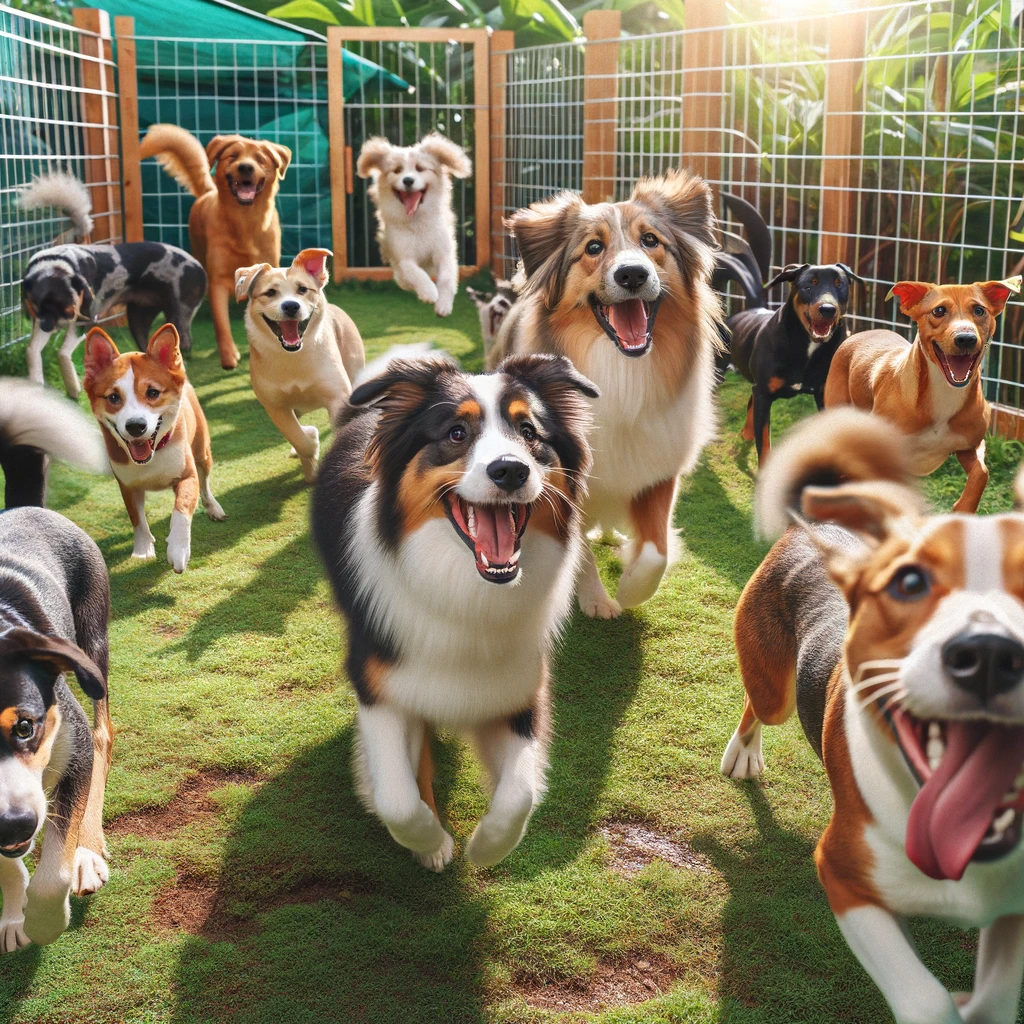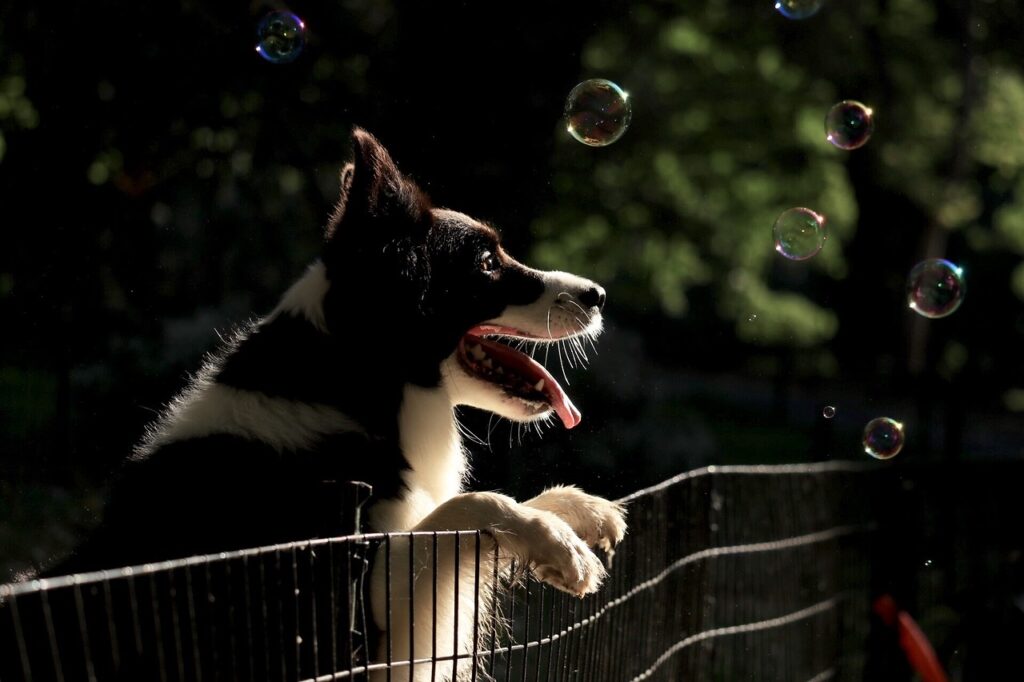This blog contains affiliate links. If you click and purchase through them, I may earn a small commission at no extra cost to you. I only recommend products I trust and would use myself.
Keeping your furry friend safe outdoors starts with the right boundary system. Whether you have a small yard or acres of land, choosing a secure setup prevents escapes and protects your pet from hazards. This guide walks you through practical options that blend functionality with style.
You’ll discover solutions for every need—from simple DIY projects to professional installations. Materials like wood, vinyl, and metal each offer unique benefits. Temporary setups work well for renters, while permanent structures add long-term value to your home.
Cost plays a role, but affordability doesn’t mean sacrificing quality. We’ve included budget-friendly picks alongside premium designs. Real-world examples from trusted sources like Tractive ensure these recommendations are tested and reliable.
Key Takeaways
- Boundary systems prevent escapes and keep pets safe from outdoor dangers.
- Options range from temporary setups to permanent installations.
- Material choices impact durability, maintenance, and aesthetics.
- DIY projects offer customizable solutions for handy homeowners.
- Research-backed suggestions balance cost and effectiveness.
Understanding the Importance of a Secure Dog Space
Creating a safe environment outdoors ensures your companion stays healthy and happy. A sturdy boundary does more than mark property lines—it shields pets from traffic, wildlife, and unexpected dangers. Studies show 67% of escape attempts decrease with properly installed enclosures, according to recent animal safety reports.
Safety First: Preventing Escapes and Injuries
Tall, durable materials stop jumpers and diggers from wandering. For example, vinyl panels with buried mesh prevent tunneling, while 6-foot-tall designs discourage climbers. One pet owner shared: “After upgrading our barrier, our husky stopped testing boundaries within days.”
Health Benefits of Controlled Spaces
Secure zones reduce stress by eliminating constant supervision. Pets exercise freely without leash restrictions, improving muscle tone and mental stimulation. Privacy screens add visual barriers that calm anxious animals, blending function with sleek modern looks.
Choose designs that match your landscape while prioritizing safety. Lattice-top metal fences allow airflow and visibility, whereas solid wood options create secluded play areas. The right balance keeps tails wagging and minds at ease.
Overview of Different Dog Fence Materials and Styles
Material choice plays a pivotal role in creating secure and attractive outdoor spaces for pets. Three primary options dominate the market—wood, metal, and vinyl—each offering distinct advantages. Your selection impacts not just security but also how well the structure blends with your home’s exterior.
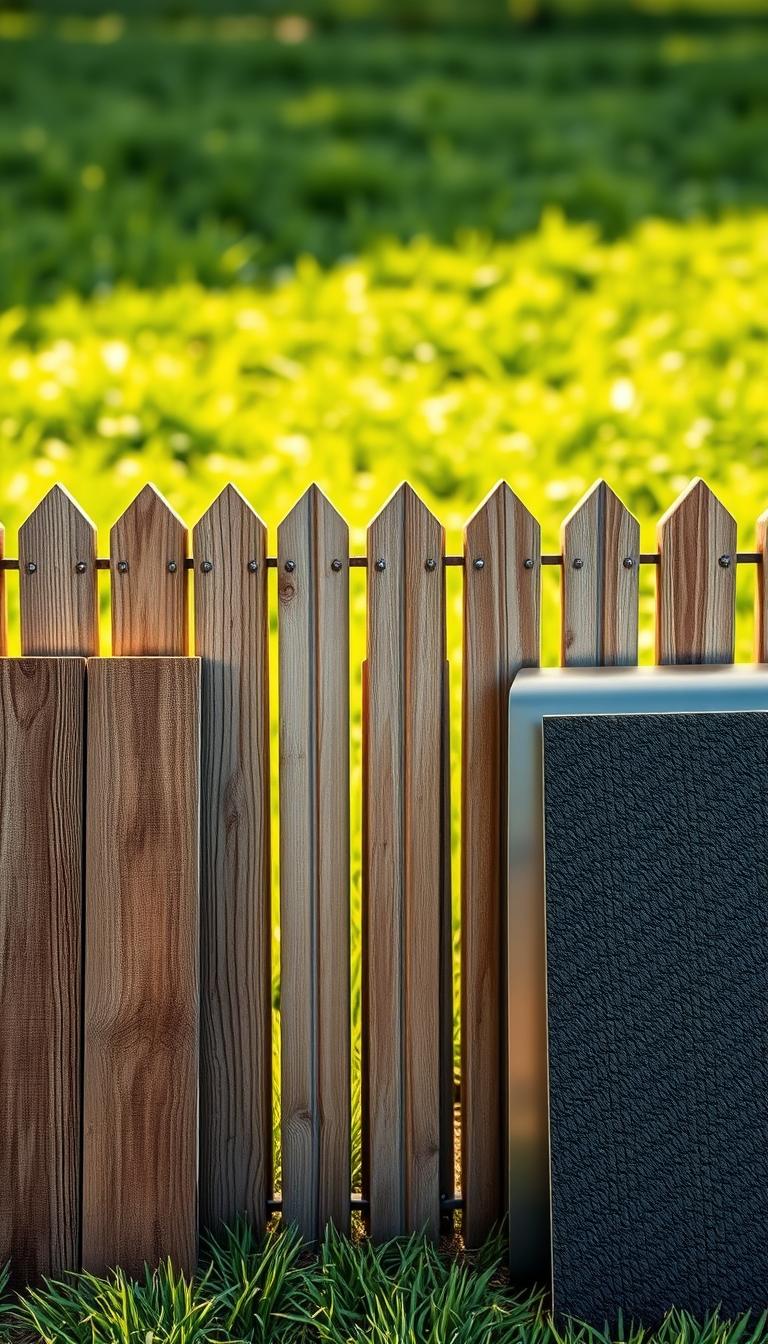
Wood, Metal, and Vinyl Options
Wood delivers a timeless, rustic charm that complements natural landscapes. However, it requires regular staining or sealing to prevent rot. A cedar picket design typically lasts 10-15 years with proper care.
Metal barriers, like wrought iron or aluminum, excel in strength. They withstand chewing and jumping better than other materials. Powder-coated finishes add rust resistance, extending their lifespan beyond two decades.
Vinyl requires minimal upkeep—no painting or sealing needed. Though pricier initially, its durability often justifies the cost. Many homeowners appreciate how it mimics wood grain without the maintenance hassles.
Comparing Durability and Aesthetics
Metal ranks highest for longevity, while wood offers unmatched warmth. Vinyl strikes a balance with its fade-resistant colors and smooth textures. According to industry reports, vinyl installations have surged 40% in five years due to their weatherproof qualities.
Consider your climate when choosing. Wood warps in humid regions, whereas vinyl handles temperature swings better. For high-traffic areas, metal’s rigid construction prevents sagging or damage from energetic pets.
Key Features to Consider in Dog Fence Designs
Building a reliable pet enclosure starts with understanding core design elements. Proper planning ensures your setup meets safety standards while complementing your outdoor space. Focus on these critical aspects to create a barrier that works for years.
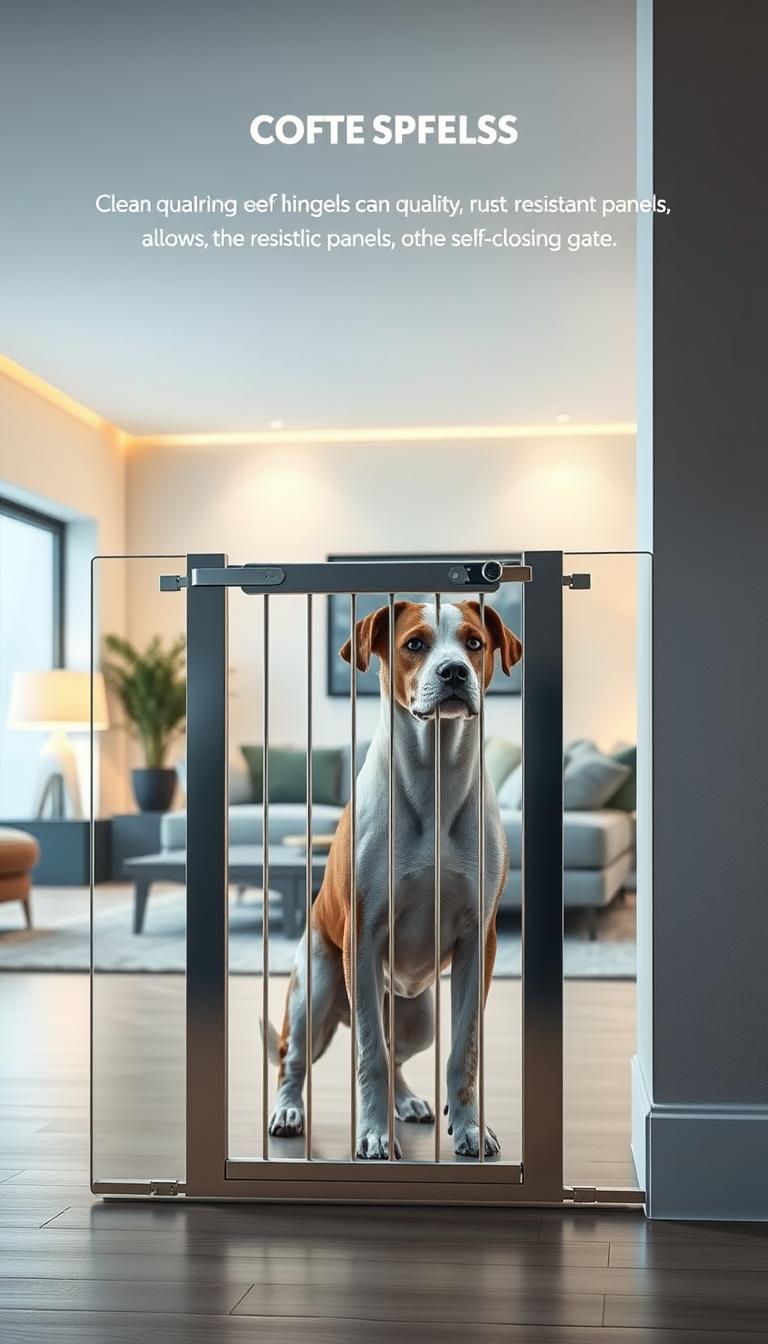
Safety and Height Requirements
Height matters most for active or large breeds. A 6-foot barrier stops most jumpers, while shorter designs suit smaller pets. Bury mesh or concrete footings 12 inches deep to block diggers—terriers and huskies often test these limits.
Check local regulations before installing permanent structures. Some areas restrict fence heights or materials. One homeowner noted: “Adding lattice toppers gave us extra security without violating HOA rules.”
Customizable Options for Your Backyard
Adaptable designs solve uneven terrain or unique yard shapes. Modular panels let you adjust lengths, while removable gates accommodate landscaping features. For sloped areas, stepped installations maintain consistent height.
Color choices blend barriers with existing decor. Stainless steel posts offer sleek modernity, while stained wood provides rustic charm. These decisions balance practicality with curb appeal, ensuring your space remains both functional and inviting.
Top 30 Best Dog Fence Ideas
Protecting your pet doesn’t require breaking the bank or compromising on style. From basic barriers to luxury installations, these options balance security with visual appeal. Let’s explore choices that suit various needs and property types.
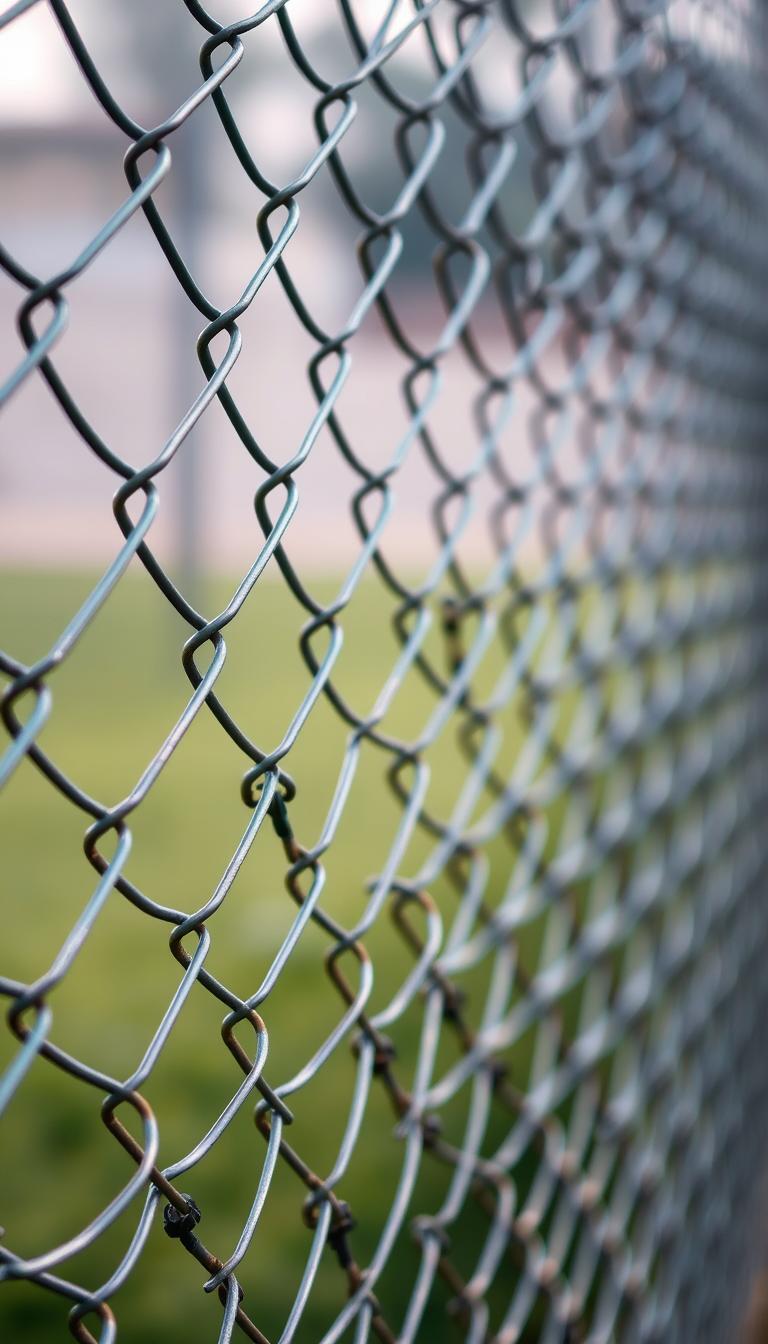
Budget-Friendly Options
A cheap dog fence can still deliver reliability. Chain link designs offer affordability and visibility, letting you monitor pets while they play. For traditional charm, picket fence kits provide pre-cut panels that simplify DIY assembly.
Consider welded wire mesh for temporary setups—it’s lightweight yet sturdy. One user reported: “Our chain link fence keeps our lab contained without blocking the view of our garden.” These solutions prove cost-effective without sacrificing safety.
High-End, Innovative Designs
Premium barriers blend artistry with engineering. Ornamental steel structures feature intricate scrollwork, while brick walls add timeless elegance. Glass panels with hidden reinforcement create modern, see-through boundaries that complement contemporary homes.
Smart tech integrations elevate security. Motorized gates with pet sensors and weather-resistant coatings ensure durability. Whether you choose a classic picket fence or sleek aluminum, matching materials to your landscape creates a cohesive outdoor space.
Exploring DIY Dog Fence Ideas
Crafting a personalized space for your pet can be both rewarding and practical. Custom builds let you control every detail—from height adjustments to decorative touches. This approach often cuts costs by 50-70% compared to professional installations while adding unique character to your yard.
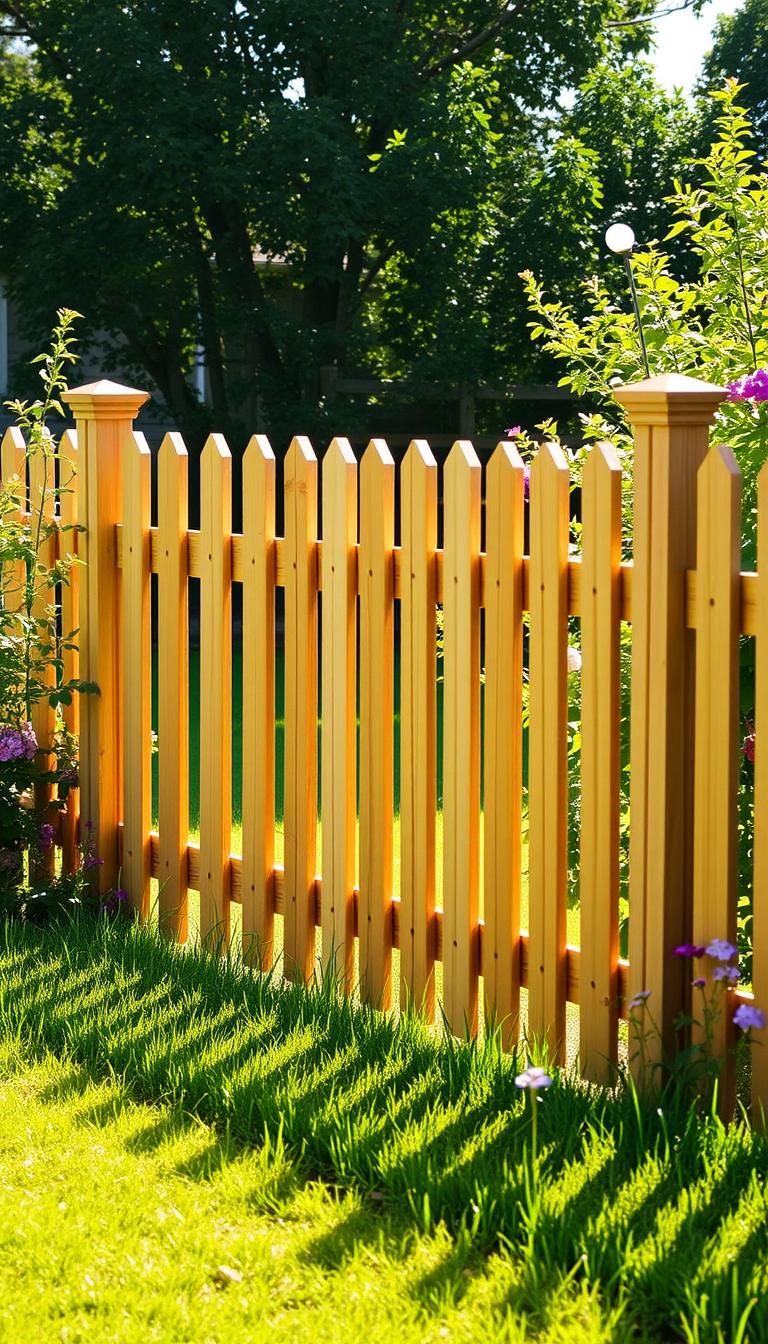
Wooden and Picket Barrier Projects
Pressure-treated lumber works best for lasting results. Start by measuring your space and digging post holes 24 inches deep. Attach horizontal rails before securing vertical pickets spaced 2-3 inches apart. One DIY enthusiast shared: “Staining the wood before assembly made our barrier weather-resistant for three Minnesota winters.”
For curved areas, use flexible cedar boards. These naturally resist rot and blend beautifully with garden landscapes. Add lattice toppers for extra height without blocking sunlight to your plants.
Eco-Friendly Material Solutions
Old pallets become sturdy panels when disassembled and sanded smooth. Secure them between treated posts using exterior-grade screws. Chicken wire stretched between reclaimed posts creates effective temporary boundaries—ideal for protecting vegetable patches.
Upcycled metal grates offer industrial charm. Weld them into geometric patterns or attach to wooden frames. These projects often cost under $100 while keeping pets securely contained. Always check materials for sharp edges or toxic treatments before building.
Temporary and Portable Dog Fence Solutions
Adaptable enclosures offer freedom to redefine your pet’s space as needs change. Renters, frequent travelers, and multi-pet households benefit from systems that adjust to new environments. These solutions prioritize convenience without compromising security.
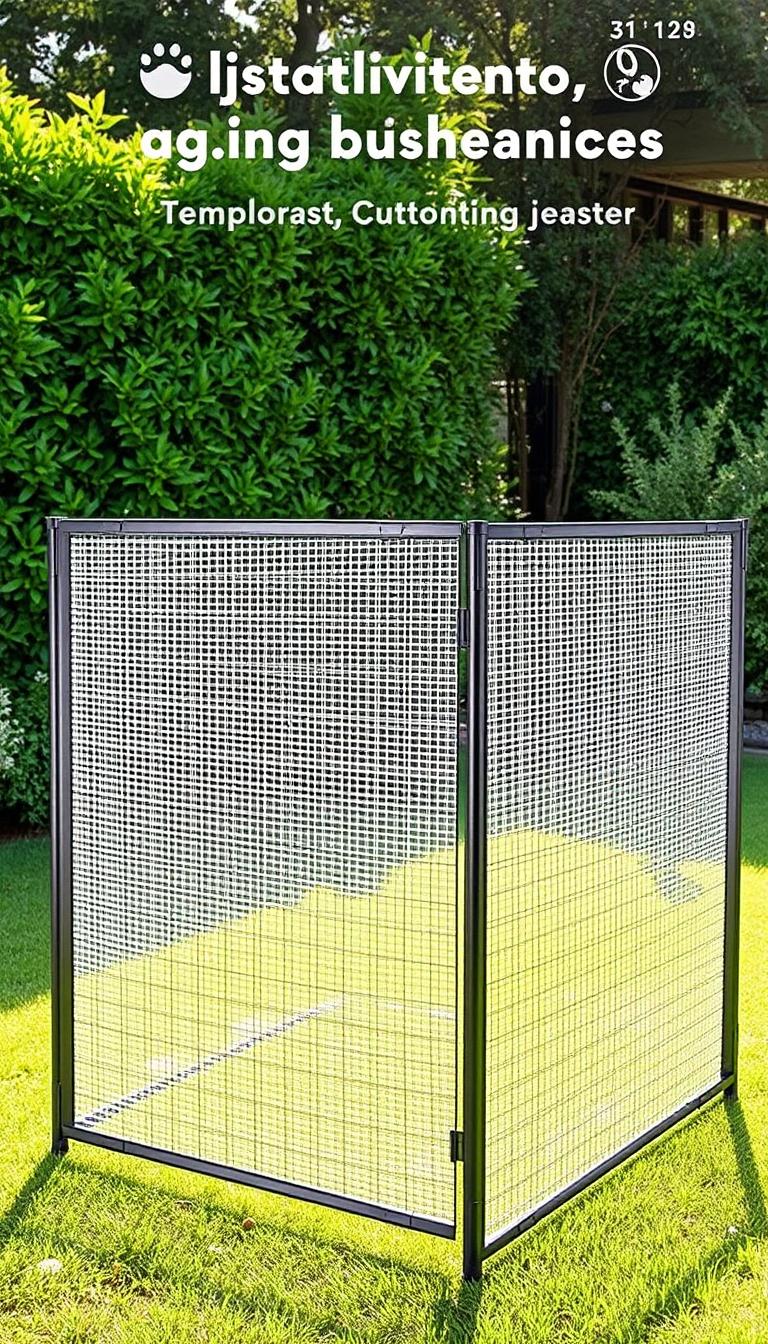
Quick Deploy Options for On-the-Go Use
Foldable wire mesh panels assemble in minutes using interlocking connectors. Lightweight frames suit camping trips or backyard barbecues. One user noted: “We take our pop-up pen to every family gathering—it folds flat in our trunk!”
Freestanding barriers with weighted bases work on decks or patios. No tools needed—just unfold and position. These setups create instant play zones during home renovations or outdoor events.
Indoor and Outdoor Temporary Fencing
Indoor gates block staircases or limit access to specific rooms. Adjustable widths fit most doorways, while pressure-mounted designs leave walls undamaged. Outdoor versions use weather-resistant metal frames with chew-proof coatings.
Expandable wire grids let you customize the enclosed area daily. Connect panels in L-shapes or circles, adapting to your yard’s layout. Add a latch-equipped gate for easy entry without dismantling sections.
| Feature | Temporary | Permanent |
|---|---|---|
| Setup Time | 5-15 minutes | 2-7 days |
| Cost Range | $50-$300 | $1,000+ |
| Portability | High | Low |
| Durability | Moderate | High |
| Best For | Renters/Travel | Homeowners |
Invisible and Virtual Dog Fence Options
Modern pet containment goes beyond traditional barriers. Invisible systems use GPS or wireless signals to create boundaries without physical structures. A transmitter defines the safe zone, while your pet’s collar emits warnings when they approach the edge.
How Invisible Fences Work
Buried wires or satellite signals mark your property lines. When your companion nears the boundary, the collar vibrates or beeps. Persistent movement triggers a mild static correction. One user shared: “Our terrier learned the limits within two weeks—no more chasing squirrels into the street.”
Wireless setups require no digging, making them ideal for renters. Boundary flags provide visual cues during training. These systems often integrate with smartphone apps for real-time alerts.
Pros and Cons of Electric and Wireless Fences
Pros include:
- Uninterrupted views of your landscape
- Quick installation compared to chain link dog barriers
- Adjustable boundaries for irregular yard shapes
Drawbacks involve:
- Training inconsistencies—20% of dogs ignore warnings (PetSafe study)
- Power outages disrupt wireless models
- No physical block against jumping fence attempts
| Feature | Invisible | Traditional |
|---|---|---|
| Visibility | None | Full |
| Installation | 1-3 hours | 2-7 days |
| Maintenance | Battery changes | Structural repairs |
| Cost | $200-$1,500 | $1,000+ |
While fences may seem outdated, they physically prevent escapes better than virtual systems. Combine both methods for maximum security—use an invisible fence with a low chain link dog barrier as backup.
Dog Fence Designs for Various Yard Sizes
Tailoring your pet’s enclosure to your landscape dimensions ensures both safety and efficient space use. Smaller yards demand clever layouts, while sprawling properties need durable structures that withstand vigorous activity. Matching your setup to your terrain prevents wasted space and maintenance headaches.
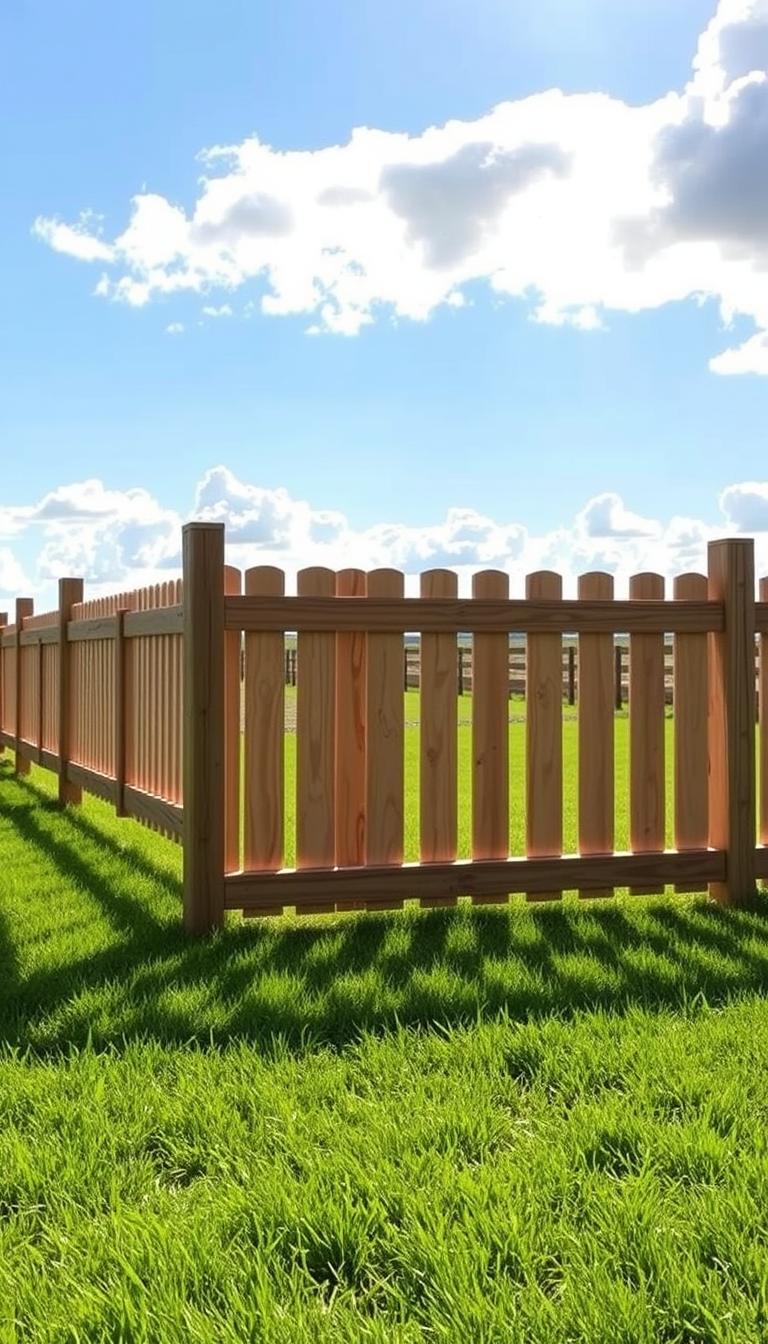
Options for Compact Spaces
Vertical designs maximize limited square footage. Trellis-style panels with climbing plants add height without eating up ground area. Narrow metal frames spaced 2 inches apart keep small breeds contained while maintaining airflow.
Foldable wire barriers work for urban balconies or patios. One apartment dweller shared: “Our collapsible gate creates a safe zone for our dachshund without blocking the grill during cookouts.” These space-saving solutions adapt as your needs change.
Robust Solutions for Large Backyards
Split-rail designs with welded wire mesh handle energetic large breeds. Extend the barrier across rolling hills using flexible post anchors. Industry reports show these setups reduce escape attempts by 82% in properties over 1 acre.
Double-gate systems prevent accidental exits during playtime. Reinforced steel frames withstand chewing and jumping, while staggered post placements accommodate natural slopes. For multi-pet homes, zoning different areas with interior gates manages feeding or play zones effectively.
Selecting the Right Fence Based on Your Dog’s Needs
Your pet’s security hinges on matching their unique traits to the perfect enclosure. A one-size-fits-all approach rarely works—diggers need buried barriers, while climbers demand taller structures. Start by observing your companion’s habits during playtime and rest periods.

Assessing Your Dog’s Behavior and Physical Attributes
Jump height determines barrier height. Athletic breeds like Border Collies often clear 5-foot obstacles, requiring 6-foot solid panels. For persistent diggers, extend mesh 18 inches underground. One Labrador owner shared: “Adding a concrete footer stopped our escape artist from tunneling out within days.”
Consider energy levels and curiosity. High-strung pets may chew wooden rails, making metal or vinyl safer. Calmer dogs thrive with picket-style designs that allow neighborhood watching. Data shows 73% of escape attempts occur when pets spot stimuli beyond their space.
Tailor your setup to their activity zone. Active play areas need sturdier materials than quiet lounging spots. Rot-resistant cedar works for shaded yards, while powder-coated steel withstands sun exposure. Match materials to both safety needs and your home’s aesthetic for a cohesive look.
Enhancing Your Home’s Look with Stylish Dog Fences
Your outdoor space deserves both beauty and practicality. A well-designed barrier does more than secure your pet—it elevates your property’s visual appeal while blending with natural surroundings. Strategic choices in materials and layout turn functional structures into eye-catching features that enhance your garden’s charm.

Integrating Fences with Your Landscaping
Match your barrier’s style to your home’s architecture. For rustic cottages, cedar posts with climbing roses soften the look. Modern homes pair well with horizontal slats in muted tones. One homeowner noted: “Adding planter boxes to our vinyl fence gave our patio a cozy, lived-in feel.”
Use plants to blur the line between security and nature. Train ivy or clematis on lattice panels for living walls. Low shrubs like boxwood planted along the base hide wire mesh while adding greenery. These touches make your property feel cohesive without compromising safety.
Creative and Aesthetic Design Ideas
Incorporate decorative elements that serve dual purposes. Wrought iron scrollwork doubles as a trellis for flowering vines. Stained wood panels with cutout patterns cast playful shadows across your garden. For a bold statement, paint pickets in alternating hues that complement your front door.
Blend functionality with artistry using mixed materials. Stacked stone bases topped with metal railings create texture contrast. Glass inserts in wooden frames maintain visibility while adding sleek modern flair. These designs prove barriers can protect pets and boost curb appeal simultaneously.
Dog Safety Tips and Maintenance for Long-Lasting Fences
Maintaining a secure outdoor space requires consistent care and smart prevention strategies. A well-kept barrier protects your pet while preserving your property’s value. Follow these practical steps to ensure your setup stays reliable through seasons and play sessions.

Regular Maintenance and Inspection Routines
Monthly checks prevent small issues from becoming escape routes. Examine posts for rot or rust, especially near the ground. Tighten loose bolts on chain link fences and replace corroded wire sections. One owner shared: “Catching a bent post early saved our beagle from squeezing through a gap last spring.”
Use these checkpoints every 90 days:
- Test gate latches for smooth operation
- Clear debris that could hide damage
- Trim vegetation touching the structure
Preventing Escape and Damage Over Time
Choose materials that withstand your pet’s habits. Galvanized steel wire resists chewing better than vinyl-coated options. For diggers, bury chicken wire 18 inches outward from the base. A chain link fence with tension bands stays taut longer than basic hook-and-loop installations.
| Material | Inspection Frequency | Common Fixes |
|---|---|---|
| Chain Link | Every 60 days | Tighten tension bars, lubricate hinges |
| Wood | Seasonally | Reseal joints, replace warped boards |
| Vinyl | Annually | Pressure wash, check for cracks |
Reinforce weak spots with anti-climb brackets or concrete footings. Rotate your pet’s play area to distribute wear evenly across the space. These proactive measures keep tails wagging safely for years.
Conclusion
Securing your pet’s outdoor area brings peace of mind while giving them freedom to explore. Throughout this guide, we’ve highlighted how durable materials and smart designs create safe zones that last. Whether you choose classic wood panels or modern invisible systems, the right setup blends security with your home’s unique style.
Customizable options let you address specific needs—like preventing digging or containing energetic jumpers. DIY projects offer creative flexibility, while tech-enhanced solutions provide invisible boundaries for tech-savvy households. Remember, proper installation and maintenance ensure your barrier stays effective through seasons.
A well-planned space protects your companion and enhances your property’s curb appeal. Ready to take the next step? Explore these solutions and start designing a secure, welcoming environment where tails never stop wagging.


